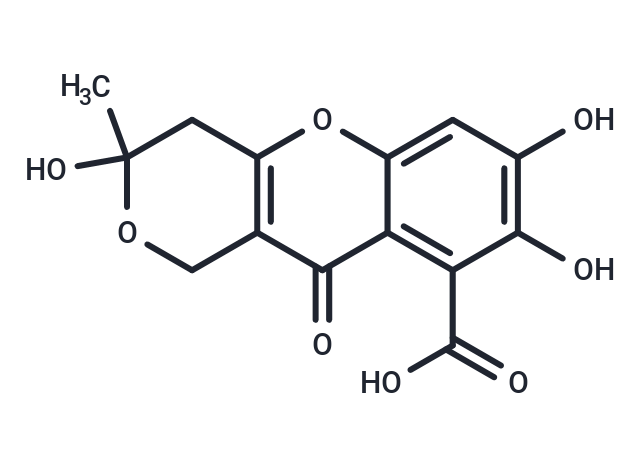 Your shopping cart is currently empty
Your shopping cart is currently empty

Fulvic Acid is a natural product of humus produced by microorganisms in soil, sediment or aquatic environments. Fulvic acid is a phenolic acid and fungal metabolite isolated from Penicillium for the first time. Fulvic Acid inhibits the dimerization of amyloid b (17-42) (AB17-42), destroys the pre-formed trimer of AB17-42, and binds to the catalytic site of phosphodiesterase 5A (PDE5A), which can regulate the body's immune system, affect the oxidation state of cells, and improve gastrointestinal function. Fulvic Acid can be used as an oxidant or reducing agent and has the potential to study chronic inflammatory diseases such as diabetes.

| Pack Size | Price | USA Warehouse | Global Warehouse | Quantity |
|---|---|---|---|---|
| 1 mg | $88 | In Stock | In Stock | |
| 5 mg | $132 | In Stock | In Stock | |
| 10 mg | $193 | In Stock | In Stock | |
| 25 mg | $323 | In Stock | In Stock | |
| 50 mg | $479 | In Stock | In Stock | |
| 100 mg | $686 | In Stock | In Stock | |
| 500 mg | $1,480 | In Stock | In Stock | |
| 1 g | $1,990 | - | In Stock | |
| 1 mL x 10 mM (in DMSO) | $172 | In Stock | In Stock |
| Description | Fulvic Acid is a natural product of humus produced by microorganisms in soil, sediment or aquatic environments. Fulvic acid is a phenolic acid and fungal metabolite isolated from Penicillium for the first time. Fulvic Acid inhibits the dimerization of amyloid b (17-42) (AB17-42), destroys the pre-formed trimer of AB17-42, and binds to the catalytic site of phosphodiesterase 5A (PDE5A), which can regulate the body's immune system, affect the oxidation state of cells, and improve gastrointestinal function. Fulvic Acid can be used as an oxidant or reducing agent and has the potential to study chronic inflammatory diseases such as diabetes. |
| In vitro | Fulvic acid (15 mg/L) enhanced growth and achieved the highest EPA content (13.9%) in the evolved diatom. Fulvic acid enhanced antioxidant potential and unprecedently governed the expression of PUFA and lipid biosynthetic genes. This investigation demonstrates the efficacy of adaptive evolution empowered by fulvic acid.[1] Embryogenic cell masses (ECM) of Abies cephalonica were grown on proliferation media in the presence and absence of fulvic acid (FA), FA increased the proliferation rate, especially during the early sampling days, and the percentage of PEM in their advanced developmental stage. During the maturation phase, fulvic matter also induced a delay in somatic embryo formation. The structure-activity relationship observed here suggests that the influence of FA on ECM may be attributed to specific bioactive molecules that are preferentially released from the FA loose superstructure.[2] |
| Molecular Weight | 308.24 |
| Formula | C14H12O8 |
| Cas No. | 479-66-3 |
| Smiles | CC1(O)Cc2oc3cc(O)c(O)c(C(O)=O)c3c(=O)c2CO1 |
| Relative Density. | 1.79 g/cm3 (Predicted) |
| Storage | keep away from moisture | Powder: -20°C for 3 years | In solvent: -80°C for 1 year | Shipping with blue ice/Shipping at ambient temperature. | ||||||||||||||||||||
| Solubility Information | DMSO: 3.09 mg/mL (10.02 mM), Sonication is recommended. Methanol: Soluble Chloroform: Soluble | ||||||||||||||||||||
Solution Preparation Table | |||||||||||||||||||||
DMSO
| |||||||||||||||||||||
| Size | Quantity | Unit Price | Amount | Operation |
|---|

Copyright © 2015-2026 TargetMol Chemicals Inc. All Rights Reserved.